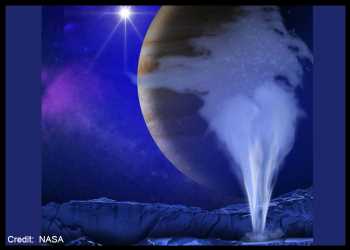Astronomers using data from NASA’s James Webb Space Telescope have identified carbon dioxide in a specific region on the icy surface of Jupiter’s moon Europa.
Jupiter’s moon Europa is one of a few regons in the solar system that could potentially harbor conditions suitable for life. Previous research has shown that beneath its water-ice crust lies a salty ocean of liquid water with a rocky seafloor. However, scientists had not confirmed if that ocean contained the chemicals needed for life, particularly carbon.
Analysis indicates that this carbon likely originated in the subsurface ocean and was not delivered by meteorites or other external sources. Moreover, it was deposited on a geologically recent timescale. This discovery has important implications for the potential for life on Europa’s ocean, NASA said.
“On Earth, life likes chemical diversity – the more diversity, the better. We’re carbon-based life. Understanding the chemistry of Europa’s ocean will help us determine whether it’s hostile to life as we know it, or if it might be a good place for life,” said Geronimo Villanueva of NASA’s Goddard Space Flight Center in Greenbelt, Maryland, lead author of one of two independent papers describing the findings.
The U.S. space agency said it plans to launch its Europa Clipper spacecraft in October 2024 to perform dozens of close flybys of Europa to further investigate whether it could have conditions suitable for life.
The telescpoe detected that on Europa’s surface, carbon dioxide is most abundant in a region called Tara Regio, in addition to ocean-derived salt.
Source: Read Full Article
-
Elon Musk Says Twitter Will Change Its Logo
-
‘The Sandman’ Storms Nielsen Streaming Chart; ‘Uncharted’ Rises 17% In Second Week On Netflix
-
Major Averages Turn Mixed After Early Move To The Downside
-
‘Here Lies Love’: First-Look Images Of Broadway Theater Transformed Into Dance Club For David Byrne-Fatboy Slim Immersive Musical
-
Tax Write-Offs For Content Are Over At Warner Bros Discovery As CFO Once Again Scolds Entertainment Biz For “Spending Frenzy”

